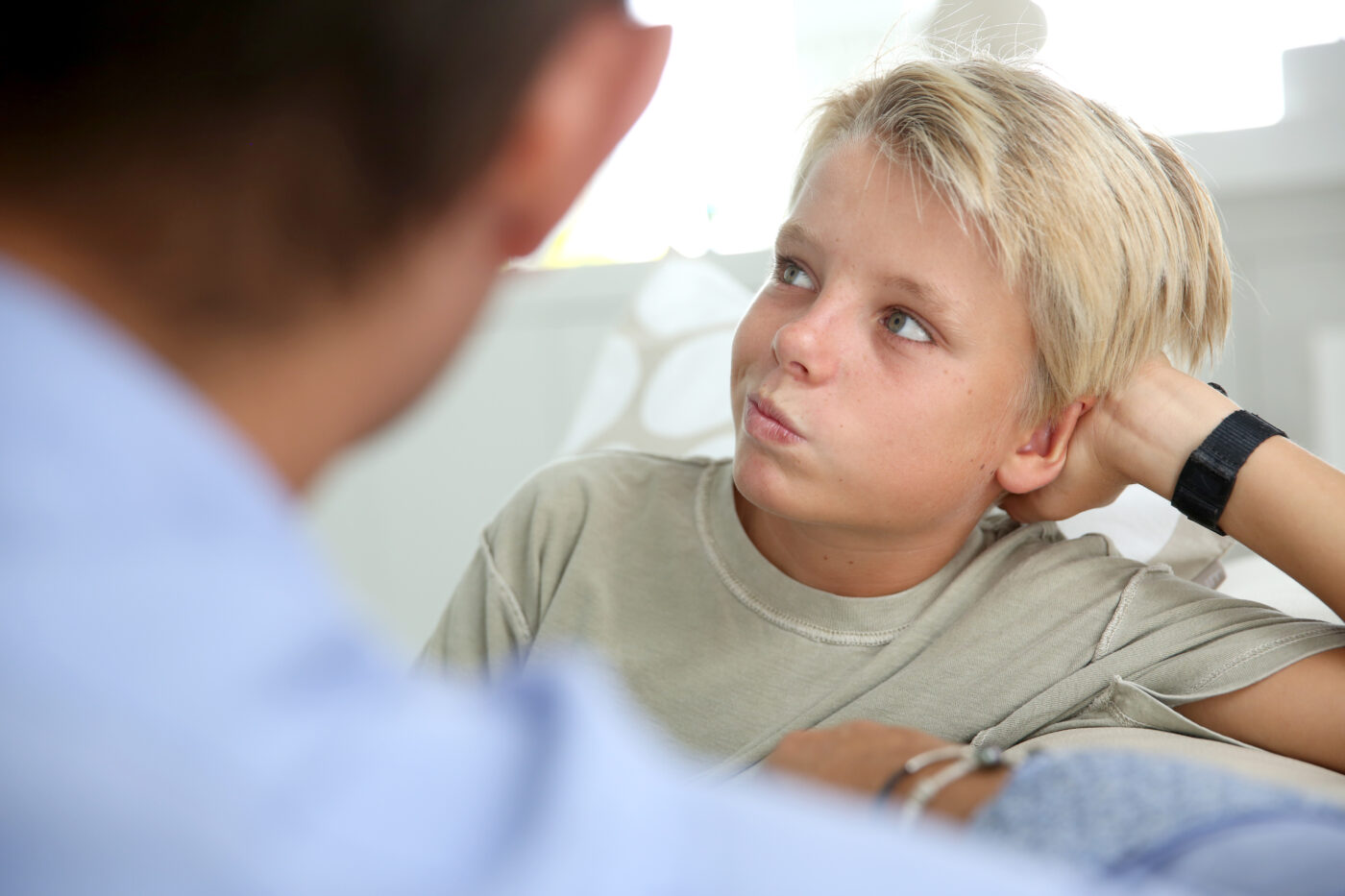Normal anxiety and fear tends to follow a developmental sequence. These tendencies seem to be hard-wired and seem to have a developmental purpose. Infants commonly show a fearful response to loud noise or the sudden loss of physical support. Reluctance to be separated from one’s caregiver is a normal, healthy response in young children and indicated the development of healthy attachment. When a child starts to walk on its own, fear of strange animals is an adaptive response. Performance anxiety can appear in late childhood and social phobia in adolescence.
Some degree of separation anxiety is a sign that the preschooler has developed healthy attachments to loved ones. In many cases, it stops within 3-4 minutes after the parent leaves.
Temperament: Some children seem more irritable and clingy as infants, have more trouble establishing a regular daily schedule, and have more difficulty with transitions. (This is more enduring than a couple of months of colic) Such children may be more vulnerable to separation anxiety. Such a child may require more work and attention. However, having a more difficult temperament, does not invariably lead to problems in later childhood.
Normal Development of Separation: Most common times for separation fears: eight months, twelve months and anywhere between 18 months to three years. Separation anxiety generally emerges around nine months of age and peaks around 12-24 months. The child’s crying and clinging can express two different messages. First, the child may cry when the parent leaves because they fear that the parent will be gone forever. The second situation is when the child, often after a fairly good day, begins to cry when the parent returns. This is because the parent’s return reminds the child of how he or she felt when the parent left. Sometimes, children between one and two years of age may walk or crawl away themselves, and then become anxious at the separation they themselves have created. Separation anxiety generally decreases between 2 and 3 years of age. The child often tends to be shy with strangers, but morning separations become easier. The degree of separation difficulty may vary from day to day. One day, the child may be anxious to go and another day, clingy and sad. Many two-year-olds go through a phase when they prefer a particular parent. This can exhaust the desired parent and make the other parent feel unloved. The child has more of a drive toward independence. Still transition times can be difficult, and lead to temper tantrums.
For toddlers, those who have had either very few or very frequent separations from loved ones experience the most separation anxiety. Adults too experience anxiety when separated from loved ones, but it is usually not so overwhelming. The adult has a better concept of time and has had more experience dealing successfully with separation.
Factors that may contribute to separation anxiety
- Tiredness
- Minor or major illness
- Changes in the household routine
- Family changes such as birth of a sibling, divorce, death or illness.
- Change in caregiver or routine at day care center.
- Parents usually are not the cause of the separation anxiety, but they can make things worse or better.
Factors that may reduce the chances of developing separation anxiety
- Start occasionally using a babysitter by six months of age. This helps the child tolerate short periods away from the parent and encourages him or her to build trust in other adults.
- Even though children of this age do not engage in cooperative play, start contact with peers by 12 months. By age three, the child should be experiencing play groups.
- Some form of preschool may be helpful by age 3 or 4. This is especially important for children who seem overly dependent on their parents.
Supporting a child through periods of separation anxiety.
- Positive experiences with caregivers, short times at first.
- Help child become familiar with new surroundings and people before actually leaving the child there.
- Rituals (bedtime and morning)
- “Lovie” or “Cuddly” Represents closeness to parents. If possible, allow the child to take the “Lovie” along.
- Do not give in. Let the child know that he or she will be all right.
- Remind the child of previous brave things he or she has done. Talk about how a fictional character might handle it.
- Let child know, in words he or she can understand that you appreciate how distressing it must be to be separated from loved ones. Understanding and acceptance, but not excessive sympathy.
- Never make fun of a child’s separation distress. Do not scold child for it.
- Do not bribe child to mask the distress. If you plan a special activity after you pick the child up, let it be unconditional.
- Focus on the positive things that happened in daycare. Don’t let them dwell on fears or imagination of what might happen.
- Minimize fears by limiting scary TV shows
- If it is an older child, consider introducing him or her to some of the children who are to be in the class and arranging play dates in advance.
- Preparing the child–reading books about going to preschool, pretending about going on voyages or quests.
- Make shopping for school supplies a special event just for that child.
- Expect a child to be more tired and possibly more irritable than usual when he or she starts Kindergarten or First grade for the first few weeks.
- When leaving, give a quick kiss and hug and cheerfully say goodbye.
- Don’t prolong your departure or come back several times.
- Don’t sneak out of the room.
- Even if you feel that a strict teacher or a bully might be part of the problem, keep your child going to school while these problems are being handled.
- If your child does stay home, do not make it an extra fun, gratifying day.
The Anxious Parent–Suggestions for Teachers
- Teacher should introduce self to child and invite the child to play with toys or have a snack.
- Offer to have the parent stay a while, leave the child alone briefly with the teacher and then return.
- Suggest to the parent that he or she try role playing with the child to rehearse the separation.
- Teacher could have a ritual for the parent leaving the child.
- If the child is in an absolute panic, ask parent to stay until the child is quieter. Teacher should ask parent to comfort child in a firm, loving voice.
- Teacher should never criticize child for feeling sad or anxious.
Warning signals
- Child is inconsolable for more than 2 weeks.
- Repeated physical complaints in the morning before preschool.
- Separation anxiety continuing into elementary school years and interfering with activities that other children do at that particular age.
- No separation anxiety at any time.
- School refusal in an older child or adolescent is often a more serious problem. In such a case, the parent should seek professional help early.









